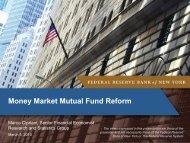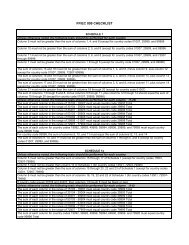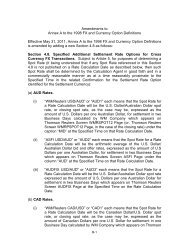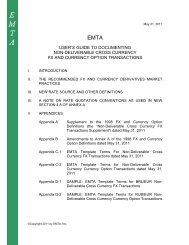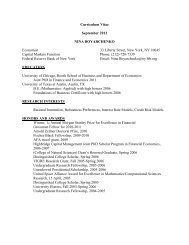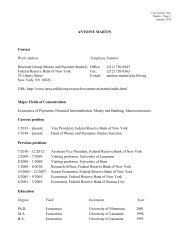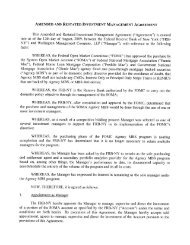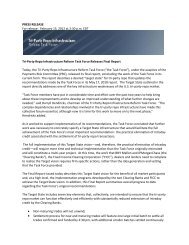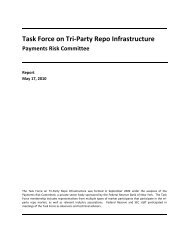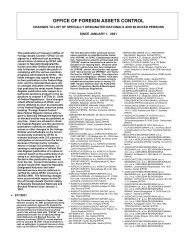Residential Foreclosures in the City of Buffalo, 1990-2000 - Federal ...
Residential Foreclosures in the City of Buffalo, 1990-2000 - Federal ...
Residential Foreclosures in the City of Buffalo, 1990-2000 - Federal ...
Create successful ePaper yourself
Turn your PDF publications into a flip-book with our unique Google optimized e-Paper software.
While <strong>the</strong> level <strong>of</strong> lend<strong>in</strong>g over <strong>the</strong> 1992-<strong>2000</strong> period varied among communities,<br />
<strong>the</strong> distribution <strong>of</strong> lend<strong>in</strong>g across major loan types was fairly similar. FHA lend<strong>in</strong>g was<br />
somewhat more prevalent <strong>in</strong> East Delavan and less common <strong>in</strong> North <strong>Buffalo</strong>-Elmwood<br />
than was typical, while Riverside demonstrated a relatively low share <strong>of</strong> conventional<br />
ref<strong>in</strong>ance lend<strong>in</strong>g. But generally, <strong>the</strong> differences <strong>in</strong> lend<strong>in</strong>g patterns by loan type were not<br />
significant.<br />
Foreclosure Rates on FHA and Conventional Mortgages<br />
Through an analysis <strong>of</strong> mortgage lend<strong>in</strong>g patterns, we improve our understand<strong>in</strong>g <strong>of</strong> <strong>the</strong><br />
context <strong>in</strong> which <strong>the</strong> rise <strong>in</strong> foreclosures took place. Lend<strong>in</strong>g data also allow us to assess<br />
<strong>the</strong> performance <strong>of</strong> <strong>the</strong> three major types <strong>of</strong> loans. The performance <strong>of</strong> loans is <strong>in</strong>dicative<br />
<strong>of</strong> <strong>the</strong> relative risk associated with each loan type. The level <strong>of</strong> risk among loan types can<br />
vary because <strong>of</strong> differ<strong>in</strong>g terms (for example, loan-to-value ratio, <strong>in</strong>terest rate, fees) and<br />
differ<strong>in</strong>g pools <strong>of</strong> borrowers (for example, those with a good versus those with a poor<br />
credit history). Additionally, an exam<strong>in</strong>ation <strong>of</strong> <strong>the</strong> performance <strong>of</strong> loans across <strong>Buffalo</strong><br />
communities helps to expla<strong>in</strong> <strong>the</strong> patterns <strong>of</strong> foreclosure by loan type observed earlier <strong>in</strong><br />
this study. Although we are unable to determ<strong>in</strong>e a foreclosure rate directly, we can get a<br />
sense <strong>of</strong> loan performance by calculat<strong>in</strong>g <strong>the</strong> percentage <strong>of</strong> all loans orig<strong>in</strong>ated from 1992<br />
to <strong>2000</strong> that foreclosed <strong>in</strong> <strong>2000</strong>. The results for <strong>Buffalo</strong> and its communities are depicted<br />
<strong>in</strong> Chart 8.<br />
Us<strong>in</strong>g this foreclosure rate proxy, we see that for <strong>Buffalo</strong> overall, FHA purchase<br />
mortgages orig<strong>in</strong>ated from 1992 to <strong>2000</strong> were more likely to have foreclosed <strong>in</strong> <strong>2000</strong><br />
than were ei<strong>the</strong>r k<strong>in</strong>d <strong>of</strong> conventional mortgage. This result might be expected, given <strong>the</strong><br />
fact that <strong>the</strong> standard FHA foreclosure rate is typically twice that <strong>of</strong> <strong>the</strong> conventional rate.<br />
However, <strong>in</strong> this case, <strong>the</strong> FHA rate appears to be somewhat less than twice <strong>the</strong><br />
conventional rate. This difference could simply be due to <strong>the</strong> fact that <strong>the</strong> standard<br />
foreclosure rate is calculated differently than our substitute for that variable. However,<br />
<strong>the</strong> foreclosure rates for FHA loans and for conventional loans <strong>in</strong> <strong>Buffalo</strong> could be closer<br />
for o<strong>the</strong>r reasons. For example, as we discuss later, <strong>the</strong>re has been significant growth <strong>in</strong><br />
<strong>the</strong> share <strong>of</strong> subprime conventional loans. The <strong>in</strong>crease <strong>in</strong> <strong>the</strong>se riskier, high-cost loans<br />
may be rais<strong>in</strong>g <strong>the</strong> foreclosure rate <strong>of</strong> conventional loans generally.<br />
37



